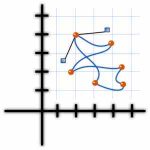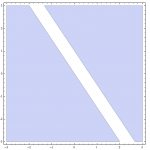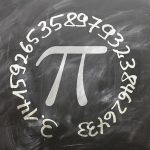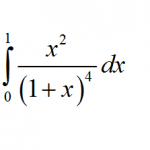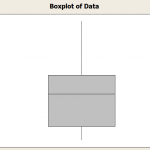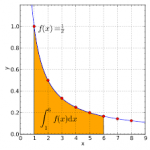Math writing? Is that even possible? Perhaps, this topic currently raises some eyebrows. It’s even possible that you are hearing this term for the first time. So, to get this question out of the way, math writing is real. But what does it mean? Personally, math writing isn’t about making math; it is about making mathematical reasoning. Some mathematicians are said to be “mathematicians of the hands” because of their ability to apply mathematical reasoning to different objects.
Mathematical reasoning is an area that requires not only mathematical knowledge but also the application of that knowledge. Without mathematical reasoning then maths, itself, is worthless. But how do we note that reasoning that encapsulates our intelligence and capabilities? This is where math writing comes into play. Math writing helps us to record ideas, thoughts, and observations to gain insights and develop conjectures.

Why Isn’t Math Writing Common In Schools?
Teaching math writing in schools is difficult for a variety of reasons, including the fact that students have varied ways of processing and articulating information. Some of them go to great lengths to find the best website to get essay written in a bid to aid study. Even at that, they receive minimal guidance from their educators on what type of mathematical writing to incorporate.
Part of the issue originates from tutors’ lack of knowledge about the best methods for teaching math writing to their students. As a result, they completely disregard it, confining these students to standard instructional techniques that focus on computation and procedural competence. For example, there is a difference between knowing that 2 plus 2 is 4, and understanding why it is 4.
Most students are confined to knowing, but not understanding - these are two different concepts. Hence, they work out mathematical calculations effortlessly but can’t understand or communicate mathematically. Unfortunately, some tutors are helpless in bridging this gap as they were once students who weren’t privileged to learn math writing. This situation makes it difficult for them to teach this topic to their students. Besides, you cannot give what you don’t have.
Math writing obstacles come with feasible practical solutions that benefit both teachers and students.
Strategies that Promote Math Writing
Students who incorporate “cramming” into mathematical problems may have a hard time understanding the underlying factors that make maths relevant. Even though they know that 12 divided by 3 is 4, they don’t understand what makes it so. In such situations, learning becomes more of “what I was told,” rather than “what I understood.” However, the following strategies can improve mathematical learning and understanding when applied by tutors.
Modelling Writing Technique
This math writing technique focuses on constructing grammatical structures, sequencing ideas logically, justifying mathematical thoughts, using simple to complex vocabularies, among other strategies. With this process, tutors communicate their mathematical thoughts aloud while putting them into writing. Not only do the students grasp the teacher’s modelled writing style, but they connect with the tutor’s thoughts as well. Learning becomes visual and mental.
How can this technique work effectively? The modelling writing technique, also known as the think-aloud technique, comprises three segments: the writing process and the revision process.
Writing Process
This writing process helps students to understand how to put their mathematical thoughts on paper. The ideal timeframe for this phase should be between 5 to 10 minutes, and here is how it works:
• Find a learning need in the students concerning a maths topic and create a think-aloud lesson
• Explain to the students the purpose of this technique, targeted audience, benefits, and resources to be used
• Record your writing using an interactive board or paper chart, communicating your thoughts aloud as you proceed
• Be concise in writing these thoughts to prevent boredom and distraction
• Once done, communicate conclusive thoughts on the technique
• Ask the students to share their experience, questions, and lessons learnt during the process
Revision Process
Tutors and students should revise previous documentation to improve learning. But in what way? Revision inculcates the habit of rereading previously written documents. So, here is how it works:
• Dedicate time with the students to revise previous modelling-based documentations
• Explain to them the benefits of revision, including ways to improve on previous works
• Display the document and encourage group reading
• Put revisions into writing to aid learning
Mathematical Writing Conference
This math writing technique involves one-on-one learning communication between a tutor and a student. This time around, the students share their thoughts and ideas on their mathematical documentation with their tutors. With the information gathered, the teacher can provide the students with more insights on how to make their works better. This technique comprises four working parts:
• Researching the students’ mathematical thought and writing process
• Identifying the students’ actual instructional and learning needs
• Delivering a teaching point that addresses mathematical learning and writing needs
• Linking current learning process to the students’ future writing skills
The mathematical writing conference technique pushes the student to do better as there is a feedback mechanism on the teacher’s part. Students use highly focused teaching guidelines from their tutors to improve their math writing skills. Ideally, this technique should not last beyond five minutes. Conferences should be conversational, but brief as well.
Feedback should be concise, brief, and within the students’ capabilities. It should also come after a genuine compliment, celebrating their works.
Minilessons
Minilessons can focus on a smaller group or the entire class. Such learning sessions are concise and intensely focused, as students are assigned independent writing strategies to improve their math writing skills. These lessons span a maximum of 10 minutes. During this period, the tutor delivers a teaching point, after which the student put the lesson into practice, mostly in the class. By doing so, the teacher can engage them actively.
In summary, the teacher makes a connection, deliver a teaching point, engage the students, and link the lesson taught to future math writing works.
In Conclusion
Math writing is designed to help students test their abilities to observe and write down math problems in English. Students who need help with complex math problems can undertake math writing. By using this technique, tutors can also provide individual instructional learning that enhances the students’ level of understanding. As such, schools should promote this technique more.
In case you have any suggestion, or if you would like to report a broken solver/calculator, please do not hesitate to contact us .


